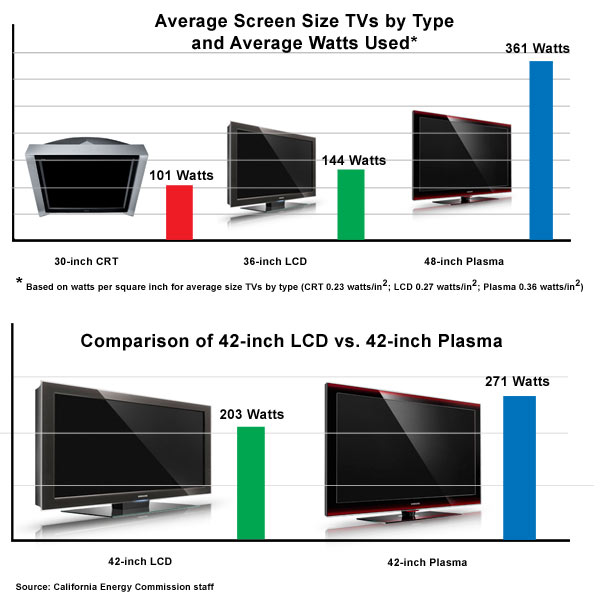You and I probably had a similar experience when we saw that plasma TV quality for the first time at our local Fry’s store. The picture quality was so vivid and beautiful it seemed like you could reach in a grab that tropical fish. The technology is truly wonderful but unofrtunately, plasma TVs have become the home’s equivalent of a gas-guzzling SUV, consuming two to three times more energy than other smaller types of TVs. In fact, some models, even when used only a few hours a day, will suck up as much electricity each year as a refrigerator. Powering a fancy TV and full-on entertainment system can add nearly $200 to a family’s annual energy bill. In five years this will add up to a $1000 easy. Plasma TVs are really a gift that keeps on taking.

Now if someone started regulating the size of TVs we can buy or own, most of us would have a serious conniption with this. But wouldn’t it benefit us if we were made aware of extra energy expenses when shopping for a TV? You may say, but wait, isn’t there the all mighty EnergyStar that should have bewarned us (yes I know it’s not a real word) about this blasphemy? The problem with Energy Star tags right now is that they identify the most energy-efficient models, based on how much energy they save when the unit is off and not in the ON mode. They won’t begin flagging the greenest televisions, when turned on, until late this year.
The biggest issue, as you see from the photo above, is not necessarily the type of technology. Even though LCD screen TVs use considerably less energy than Plasma, both of these hogs are real hungry for energy. The biggest factor in energy consumption is the set’s size. Yes size matters. After all, we can enjoy those smaller TVs, just as we enjoy small and fun cars that use way less gasoline than SUVs.
For example, a 28-inch conventional television set containing a cathode-ray picture tube, or CRT, for example, often uses about 100 watts of electricity. A 42-inch LCD set, a typical upgrade item, requires about twice that amount of electricity. But the real beast is the plasma set. A 42-inch model often sucks up 200 to 500 watts, and a 60-plus-inch plasma screen can consume 500 to 600 watts, depending on the model and programming, according to the Environmental Protection Agency.
Reality is those energy suckers in the corner are a lot of fun and they certainly are part of our society. Some spend more time with their TV sets than with their family. Some may say their TV is their family. The only thing to remember here is that energy costs are going up and if you are concerned about your bills or the environment, it is a good idea to research what are the long term owning costs before buying a set. If you are already a proud owner of Plasma TV, see if you can put in on of those Smart Strips that are really excellent at managing your entertainment system’s vampire energy when the unit is not in use.
 Lazy Gardener’s Delight: a Smart Solar Powered System that Monitors, Tracks and Waters Plants
Lazy Gardener’s Delight: a Smart Solar Powered System that Monitors, Tracks and Waters Plants 3 Steps to Finance Green Improvements Through Energy Efficient Mortgages (EEMs)
3 Steps to Finance Green Improvements Through Energy Efficient Mortgages (EEMs) How Going Solar Can Cost You Nothing
How Going Solar Can Cost You Nothing